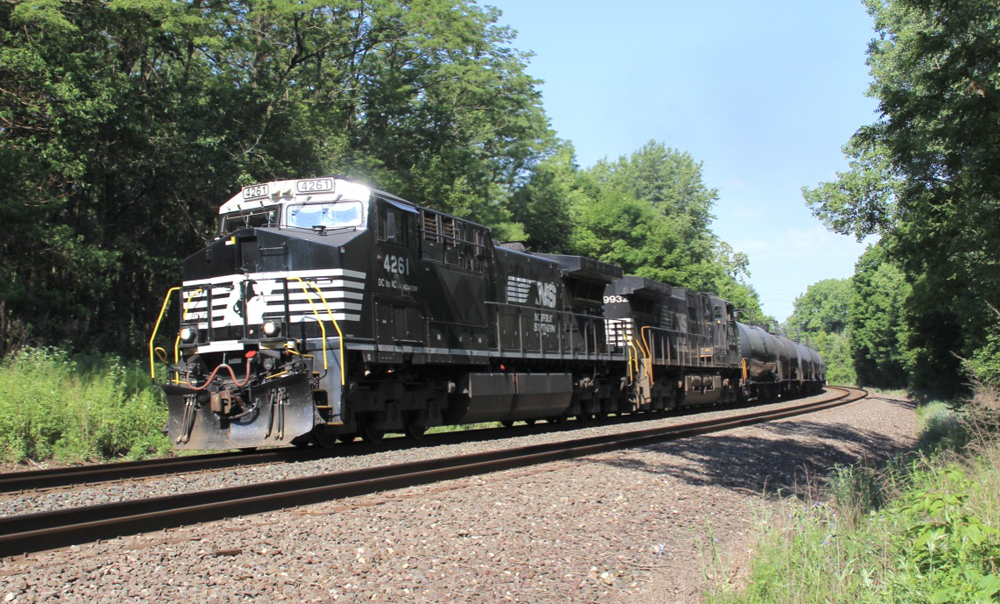
NASHVILLE — Norfolk Southern is doing all it can to solve its crew shortage problem and restore service to normal levels, executives said today.
NS has been hit hard by the double whammy of higher-than-expected attrition among its current train and engine crews and difficulty hiring conductor trainees in an extremely tight job market.
The railroad’s service has suffered as a result, with shipper complaints rising and the Surface Transportation Board seeking information about erratic transit times and deteriorating operating measures, including average train speed, terminal dwell, and number of trains held per day.
“We’ve got about a dozen locations on our network that have about 50% more attrition in the last seven months than we would have expected in a full year,” Chief Financial Officer Mark George told an investor conference this morning. “So our first order of business right now is really to replenish crews in those critical locations and do that as quickly as possible because we’ve got to get the momentum back on the network.”
Average train speed has declined 18% since Oct. 1, to 16.9 mph last week. That’s the lowest level in years.
NS is pulling five levers to solve the problem, George says.
First, NS has tripled its hiring rate since the first quarter and currently has more conductors in the training pipeline than at any time this year. “So we’ve got good momentum on the hiring side,” George says.
Second, NS aims to trim the lag time from hiring a conductor trainee to putting them into the active workforce. The railroad has compressed both the hiring timeline and the conductor training schedule.
Third, NS is working to stem attrition with retention and availability bonuses, as well as offering to buy back employees’ vacation days so they are available to work.
Fourth, the railroad is making operational changes to improve crew productivity. With average train length up 9% so far in the fourth quarter, NS is moving its tonnage on fewer but longer trains.
Finally, NS is using its “go teams” — train and engine employees who are willing to temporarily relocate — to alleviate crew shortages in key areas and is recruiting more employees to the go teams. Adjustments also have been made to crew districts, and in some cases NS is routing traffic around terminals that are particularly short of crews. This adds some roundabout routes to the network, but avoids having trains held for lack of crews.
“I want to be very, very clear … we are highly focused on getting our network fluid again, and moving with speed, and serving our customers,” George says. “The entire management team is focused on it and it is our highest priority.”
NS is caught up in the broader trend of people leaving their jobs for greener pastures, something a record 4.4 million Americans did in September, according to federal data.
“Norfolk Southern is a great place to work,” George says, citing high pay and good benefits. “But it’s an outdoor sport,” he notes, making it harder for railroads to compete for workers.
“People have a lot of options, and what we’re finding is that people are really making decisions to leave or not to join … largely based on lifestyle,” George says.
When seeking conductors, NS now finds itself in competition with Amazon warehouses, trucking, and housing construction.
“In this post-COVID world, people are choosing different ways to live their life, and work-life balance is part of that. So that’s really what we’re dealing with,” George says.
Weak traffic trends at NS are partly due to congestion, Chief Marketing Officer Alan Shaw says. Overall volume is down 4% since Oct. 1, with intermodal declining the most at 7%.
“Our network fluidity is impacting our volumes. There is no doubt it did in November, and I fully expect it to in December,” Shaw says.
Demand is strong, particularly for intermodal service amid a lack of trucking capacity, Shaw says. But that’s offset by labor and capacity shortfalls at warehouses, which have resulted in extended street times for chassis, which in turn has created a chassis shortage. NS is on track to receive 1,100 chassis by the end of the month and has more on order for next year, Shaw says.
If there’s any silver lining to the capacity issues, it is that trucking capacity is expected to remain tight next year. Shaw recently met with a trucking company in Pittsburgh that has 500 rigs but only 400 drivers, and wants to add 60 tractors to its fleet next year but will only receive 20 due to the global shortage of computer chips used in vehicles.
George and Shaw spoke with analyst Justin Long at the Stephens Annual Investment Conference.






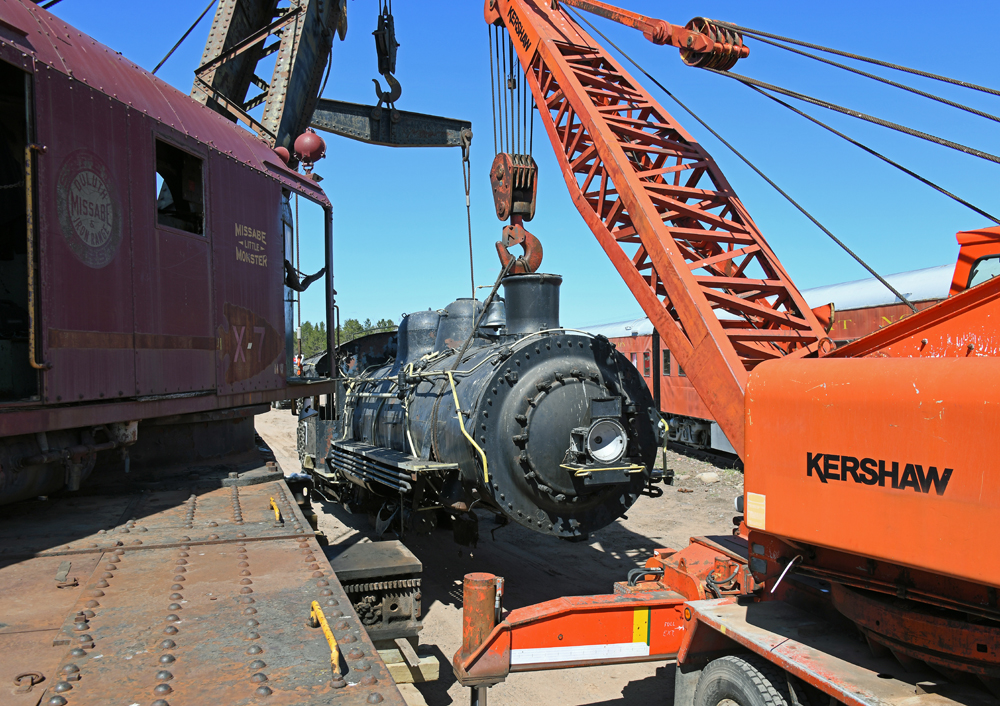
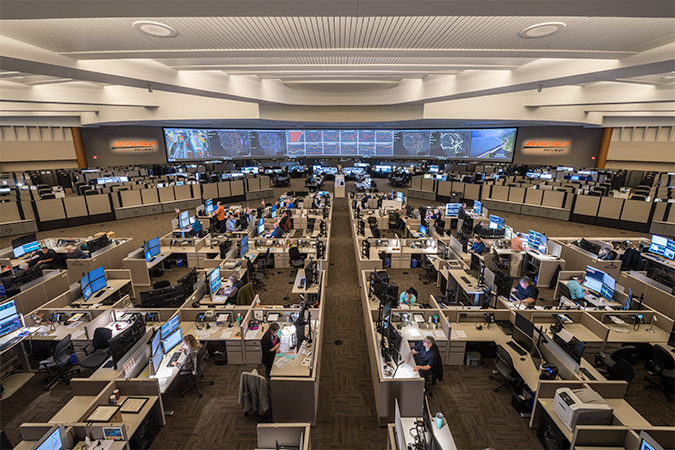
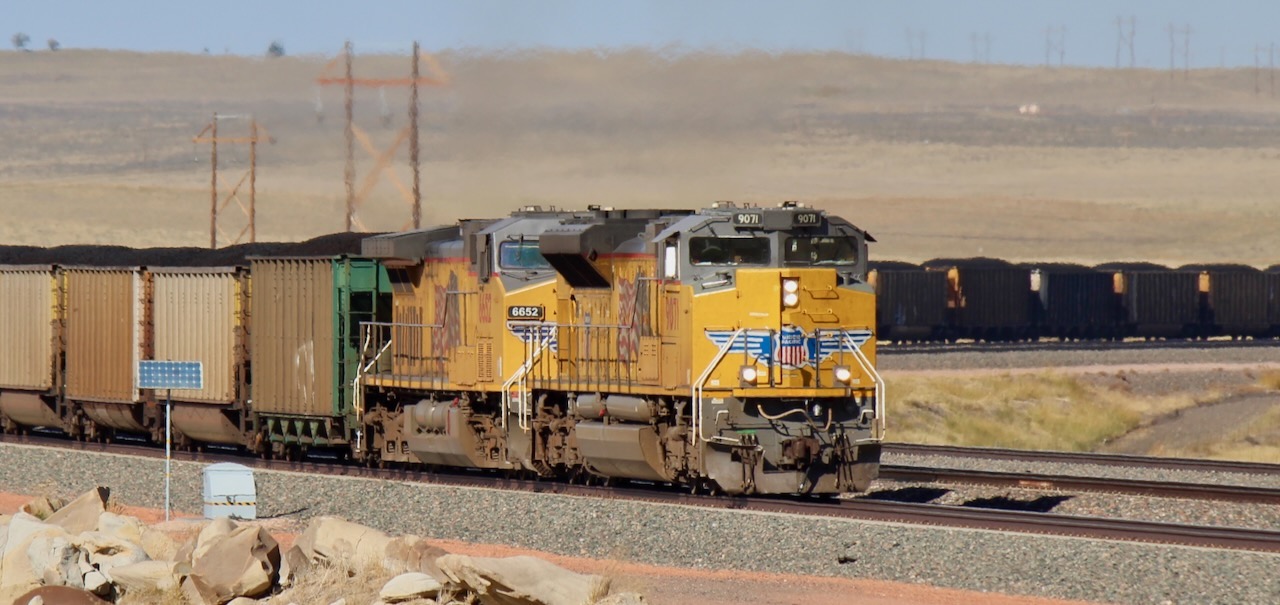
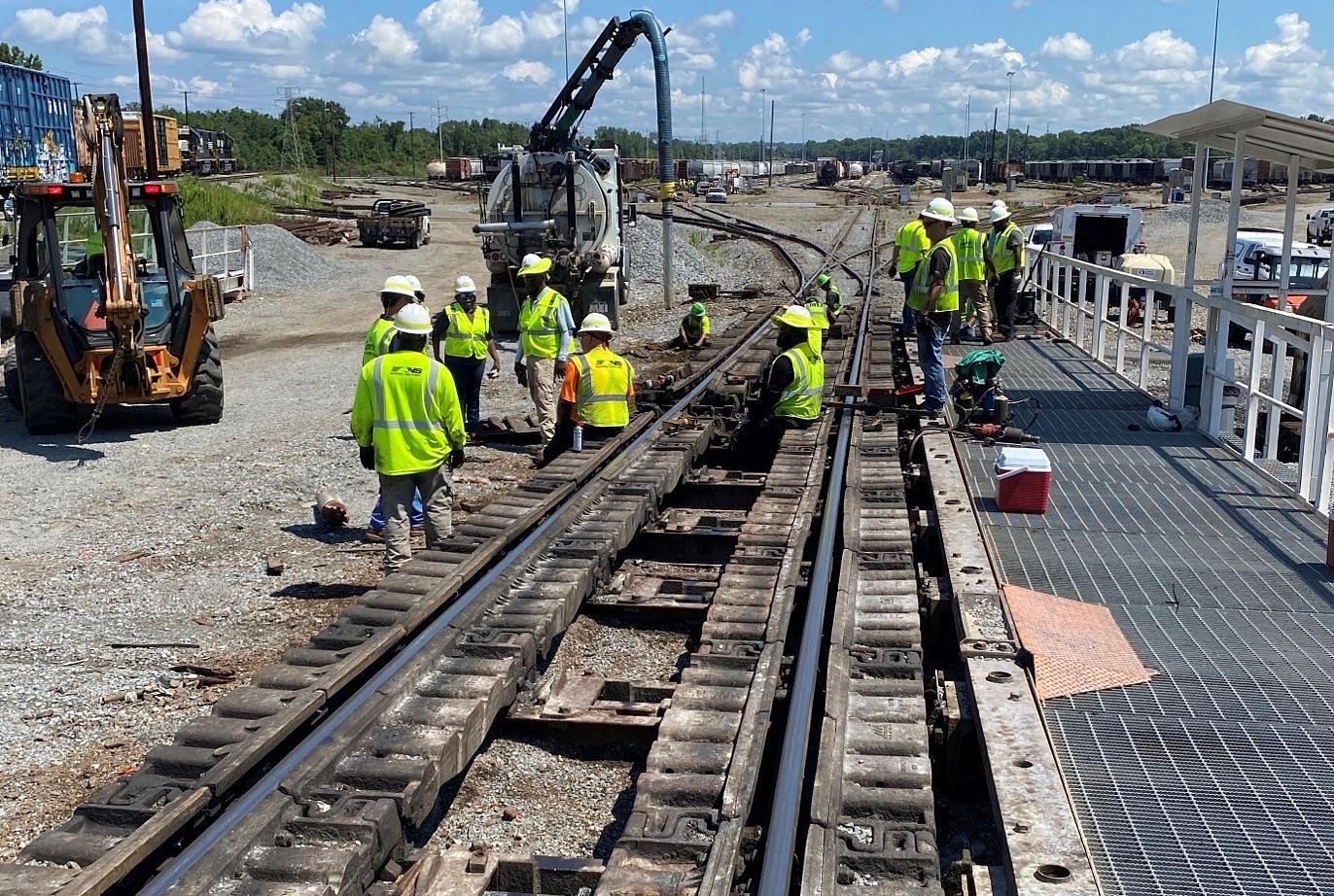




Would you want to work at a RR if:
-you were expected to cr@p in a plastic bag while at work?
-you had to sit four hours at some industry waiting for a 20 minute ride back to your home terminal after dropping a unit train because they fired/attritioned the guy who called the crew vans?
-you had to miss every kids’ ballgame, family event, sleeping in your own bed because you sat in a siding for 10 of your 12 hours on duty without seeing another train go by?
-work 24/7 no matter what. Get called at 0300 to deliver a train to an industry that has no one on-duty to drop their blue flags until 0830?
-they cut your training short and then “fire” you over some arcane and arbitrary rule-violation that had no bearing on the situation?
-fill in the blank
More money will not fix these things. These are quality of life (work) that will not change without a paradigm shift at the top.
Trains making extra crossovers? Now that means two switch sets have more curve wear.
What I would be concerned with about shorter training time for conductors would be the safety issue. It is imperative that they don’t harm themselves or others in a job that has so many ways to get hurt.
The old N&W “plantation mentality” has re-surfaced and is alive, well, and worse than ever. That’s why many seasoned T&E folks have had enough and are leaving or refusing re-call.
It has nothing to do with Covid but management and Wall Street. Nothing in the article mentioned the extremely low moral among the ranks. Experienced employees are taking retirement as soon as they are eligible. Newer employees quickly learn the mess they hired into and bail. Everything is computerized. Dispatchers are told to let auto router do the work instead of them using their knowledge and experience. So trains make multiple crossover moves for no reason or stop signals because you haven’t been lined up. Engineers no longer run the trains as computers do it all. But heaven help you if the computer messes up and screws up the train.
I didn’t realize the meaning of the word “Attrition” has been changed and now means “Layed off and fired”.
“When seeking conductors, NS now finds itself in competition with Amazon warehouses, trucking, and housing construction.”, if that’s their competition they have more problems than they know. Has nothing to do with the pandemic but management not keeping up with the times for years now. Can’t keep saying it’s for the shareholders, employees see right through that.
Right on point as far as I see it. The previous generation handled the work life but after latest round of cut costs for sake the sake of Wall Street why wouldn’t you say see you later, take the early retirement, supplement with a job that might be more consistent, less stressful? Railroads set themselves up for the larger then normal attrition rates plain and simple but executives won’t be honest because it will spook Wall Street.
…
As far as the next generation, call them entitled or call them smarter for not wanting to sign up for not so great deal. Yes, your hired, and then two to three months you might layed off after the last holiday push off goods. Who would call that a great deal in this labor market? I’m for one is middle aged and yet our company requires travelling crews, shifts covering 24/7 and yet we have to find ways to bring new people into our workforce. You move forward with times, bend sometimes and find solutions because we get paid to deliver.
Until NS addresses their serious “management culture” shortcomings, attrition among current TE&Y will continue to be a problem.
This has nothing to do with COVID they were short employees long before COVID when they laid people off for the precision schedule railroad money grab that failed just like it failed for every other railroad it was implemented on
Faster hiring and less training. I don’t know about NS in particular but I think training, particularly conductor, has been in the process of being “compressed” for decades. Cut even more? Engineer training might be more important because he’s the one operating directly but the conductor training is also tricky because in most cases they’re new to the whole railroading lifestyle and adjusting is significant.
Railroading does not fit GenX career expectations. They want career mobility, flexible hours like WFH, pension mobility, not the RRF. Railroads are still structured as a “career for life” mentality with union overhead, regulated pensions and heavy top-down decision making.
Look how much people are complaining about Amazon Warehouse work. Health benefits, college seed funding, pension assistance and they still strike. But railroad workers at least see a choice. In today’s railroad field labor hierarchy, all they see is obstacles and internal politics.
Yea reap what yea sow.
I can see it now. One of those fast tracked engineer/conductor crews taking a 9% longer freight up and down Chestnut Ridge or Copper Ridge with a mishmash of loads and empties of all types of rolling stock. The buff and draft forces are enough to test even a well seasoned head. How about six loaded long-travel boxcars slamming against eight loaded gons slamming against five empty center beams and four empty tank cars on a sharp curve near Powell or Clinton, Tennessee. (Sarcasm – Better buy some Depends.)
“Norfolk Southern is a great place to work,” George says. That is if you don’t mind extreme uncertainty in your life; working constantly, laid off for months. The current entitled generations can’t handle that type of life.
There is no specific comment on the impact of NS COVID vaccination policy on recruitment. To its credit, NS is trying to protect employees and customers, but its policy may be discouraging applicants. However, NS may have gotten ahead of the issue. There are services that NS performs under a contract with the US Government such long-distance passenger services and military transportation movements. The rest is under common-carrier obligations.